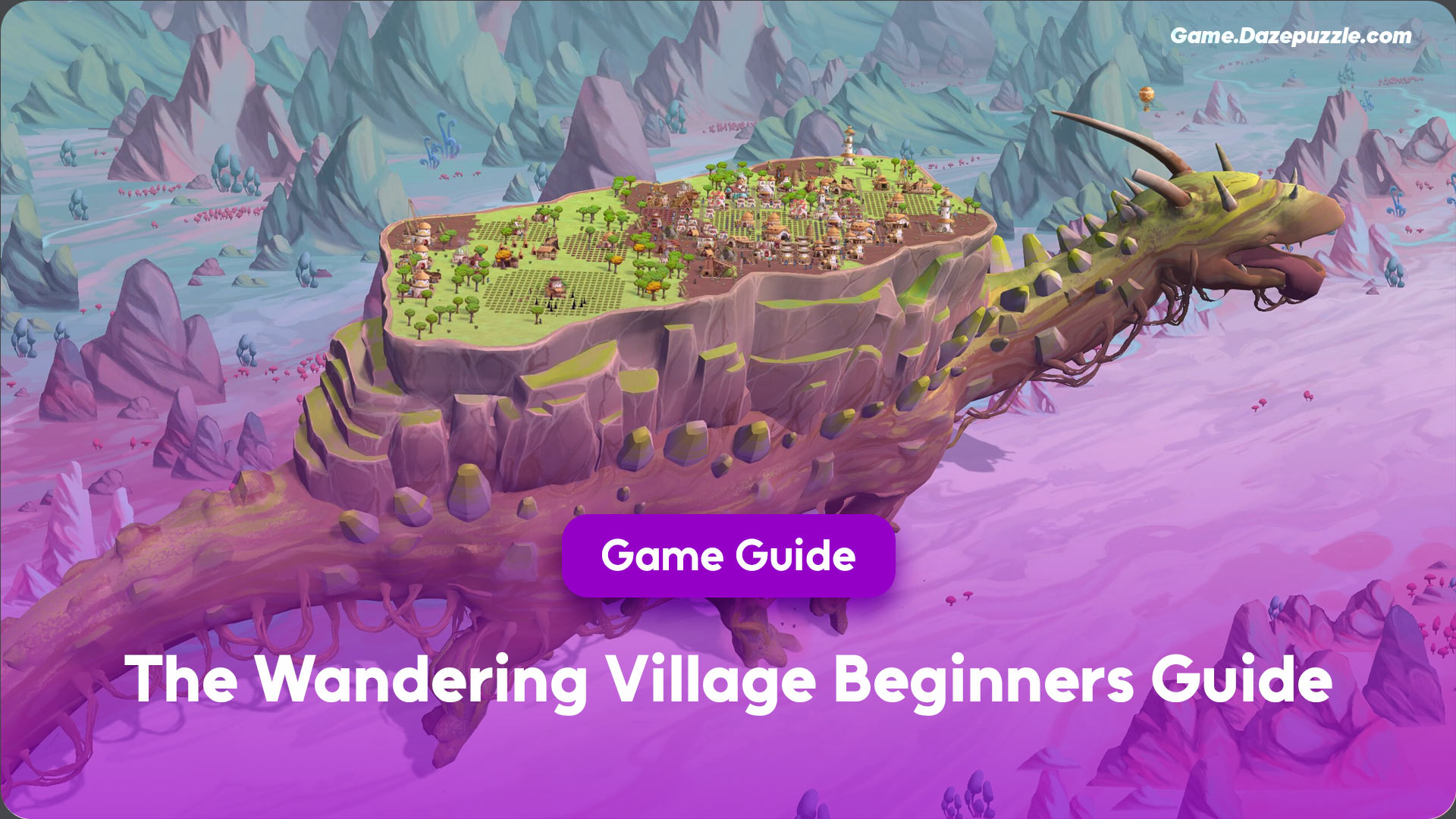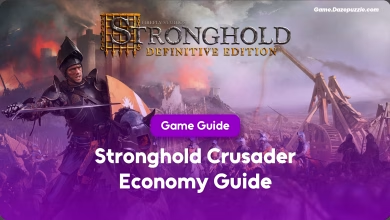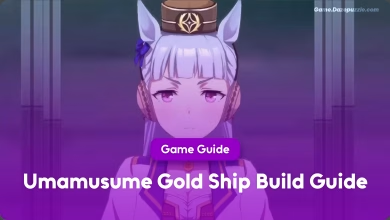The world has been swallowed by a creeping, toxic mist. Mysterious plants now blanket the earth, releasing deadly spores that have forced the last remnants of humanity from their homes. For your small band of survivors, hope seemed lost, until you found it: a colossal, gentle beast, a living mountain wandering through the poison. You found Onbu. Now, this creature is your home, your transport, and your greatest responsibility. Welcome to The Wandering Village. If you’re just starting this journey, this guide is for you. It’s not just a list of tips; it’s a complete The Wandering Village beginners guide designed to walk you through the critical first steps, explain the game’s deepest mechanics, and help you build a thriving settlement on the back of your new, gigantic friend.
What Is in Our Wandering Village Beginners Guide 2025
Your First Moments: The Golden Rules of Day One
The calm, cozy art style of The Wandering Village can be deceiving. The game gives you a false sense of security, but in reality, your decisions in the first ten minutes will echo for hours. A weak start almost guarantees a mid game collapse. The beginning isn’t a tutorial; it’s the most critical phase for laying a stable foundation. To start strong, follow these steps precisely.
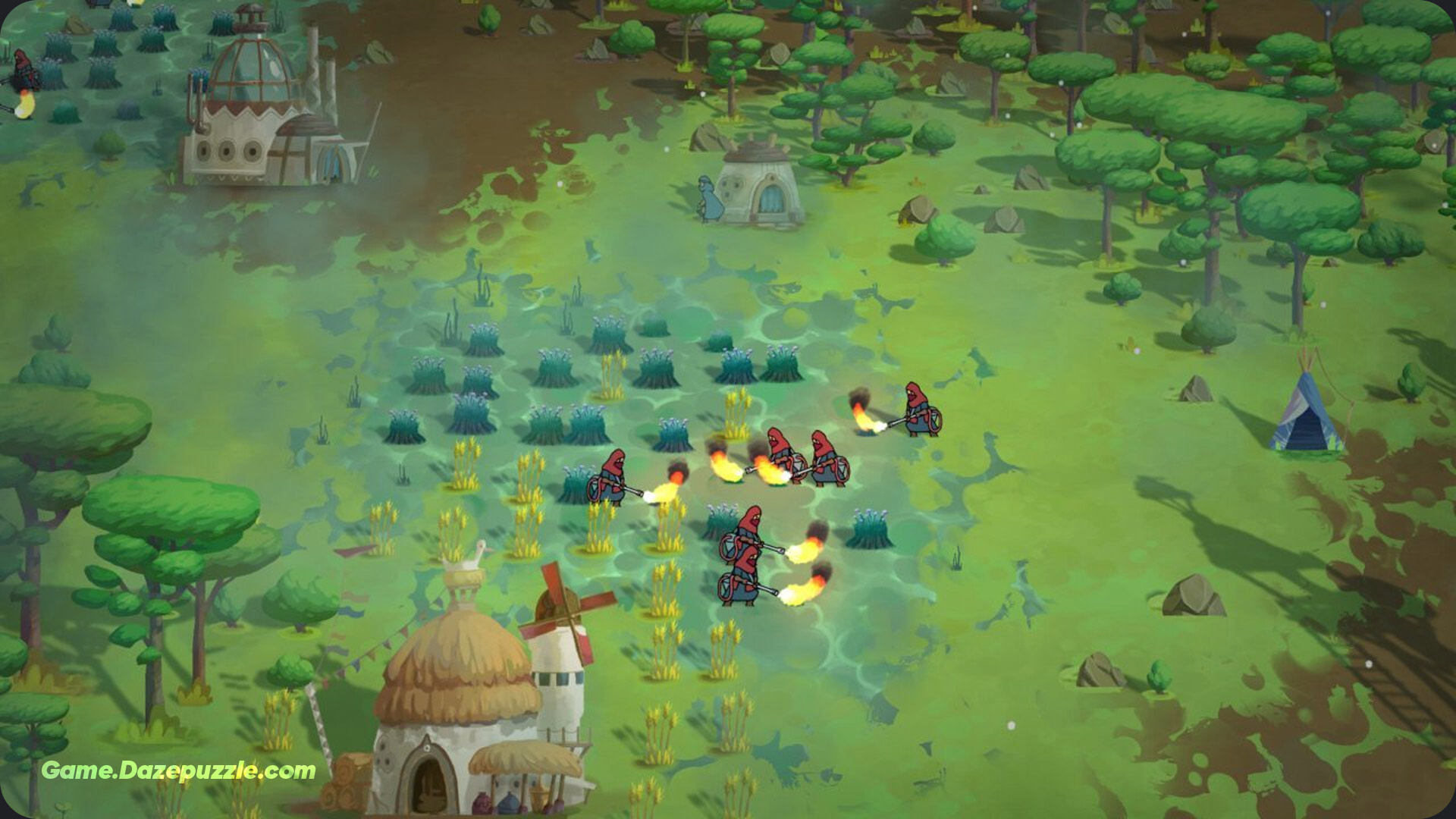
The very first thing you should do when you load into a new game is hit the spacebar. Pause the game. This is the single most important action you can take. It gives you unlimited time to look around, assess the resources on Onbu’s back, and plan your initial construction without the pressure of your villagers’ needs ticking down.
With the game paused, your first priority is shelter. Build enough tents for your starting population. Next, you need food, and you need it fast. Build a Berry Gatherer. Berries are a quick, raw food source that will keep your people fed while you set up more complex food chains. While those are being built, assign your workers to start chopping down the small trees and breaking the small rocks scattered across Onbu’s back. This will give you the wood and stone you need for the next crucial buildings. A critical warning: Do not, under any circumstances, touch the large, thorny spikes on Onbu’s back. Harvesting them provides stone, but it severely damages Onbu’s trust, a mistake you cannot afford to make early on.
Once you have a small stockpile of wood and stone, immediately build a Research Building. Without this, you are locked out of all technological progression, and your village is doomed. Finally, build a Material Storage for your wood and stone, and a Pantry for your food. This prevents resources from being left on the ground where they can decay and go to waste, ensuring everything you gather is properly stored.
The Heartbeat of Your World: A Deep Dive into Onbu
Onbu is more than just your mobile base; it is a living, breathing creature with needs that you must carefully manage. Your relationship with this gentle giant is the core of the game, a delicate balance of give and take that will define your entire strategy.
Understanding Onbu’s Vital Signs
Four key meters dictate Onbu’s well being. Ignoring any of them can lead to disaster.
- Hunger: Onbu gets hungry over time. If its hunger reaches 100%, it will start to lose health. You can feed it raw mushrooms found on its back or, more effectively, processed meals from an Onbu Kitchen.
- Sleepiness: The giant needs to rest. If its sleepiness hits 100%, it will lie down and sleep wherever it is, regardless of your commands. If this happens in the middle of a toxic forest, it can be a death sentence for your village.
- Health: This meter drops due to starvation, poison, or your own parasitic actions (like extracting its blood or bile). You can restore Onbu’s health using an Onbu Doctor building.
- Poison: Onbu becomes poisoned when traveling through toxic biomes or from certain negative events. High poison levels not only drain its health but also cause toxic plants to sprout on its back, which can spread to your farms and buildings.
The Trust Economy: Your Most Important Currency
Trust is the central currency of your relationship with Onbu. It’s not just a feel good metric; it’s a resource that directly determines whether Onbu will obey the commands you issue from the Hornblower.
Actions that build trust are acts of kindness: petting Onbu (via the Onbu Doctor), feeding it special meals, and healing its health or poison levels. Actions that destroy trust are acts of exploitation: harvesting its back thorns for stone, extracting its bile for fuel, drawing its blood for food, or using a special building to force it into submission.
This creates a fascinating economic system. You can “spend” trust to gain other resources, or you can “save” it to “buy” control and safety. This leads to two fundamentally different, yet equally valid, strategic paths.
Two Paths, One Goal: The Symbiote or the Parasite?
The game presents you with a core strategic choice that defines your entire playthrough. Are you a friend or a parasite?
The Path of Friendship and Symbiosis
This path is about maximizing trust to maintain complete control over Onbu’s direction, speed, and resting spots. It’s the safer, more stable long term strategy. You will prioritize researching the Onbu Doctor to pet and heal it, and the Onbu Kitchen to feed it high quality food. You will never harm Onbu, relying on sustainable resources like Biogas for fuel instead of its bile. This path is about proactive care and building a bond.
The Path of Pragmatic Exploitation
This path treats Onbu’s trust as a finite resource to be spent for the village’s survival. It’s a high risk, high reward approach focused on reactive problem solving. You might harvest its thorns for a quick burst of stone in the early game, or extract its bile for emergency fuel. This strategy requires carefully balancing harmful actions with healing and petting to keep trust from falling to critical levels, where Onbu might start shaking and destroying your buildings. This path is about calculated risks and doing what’s necessary to survive, even at a cost to your host.
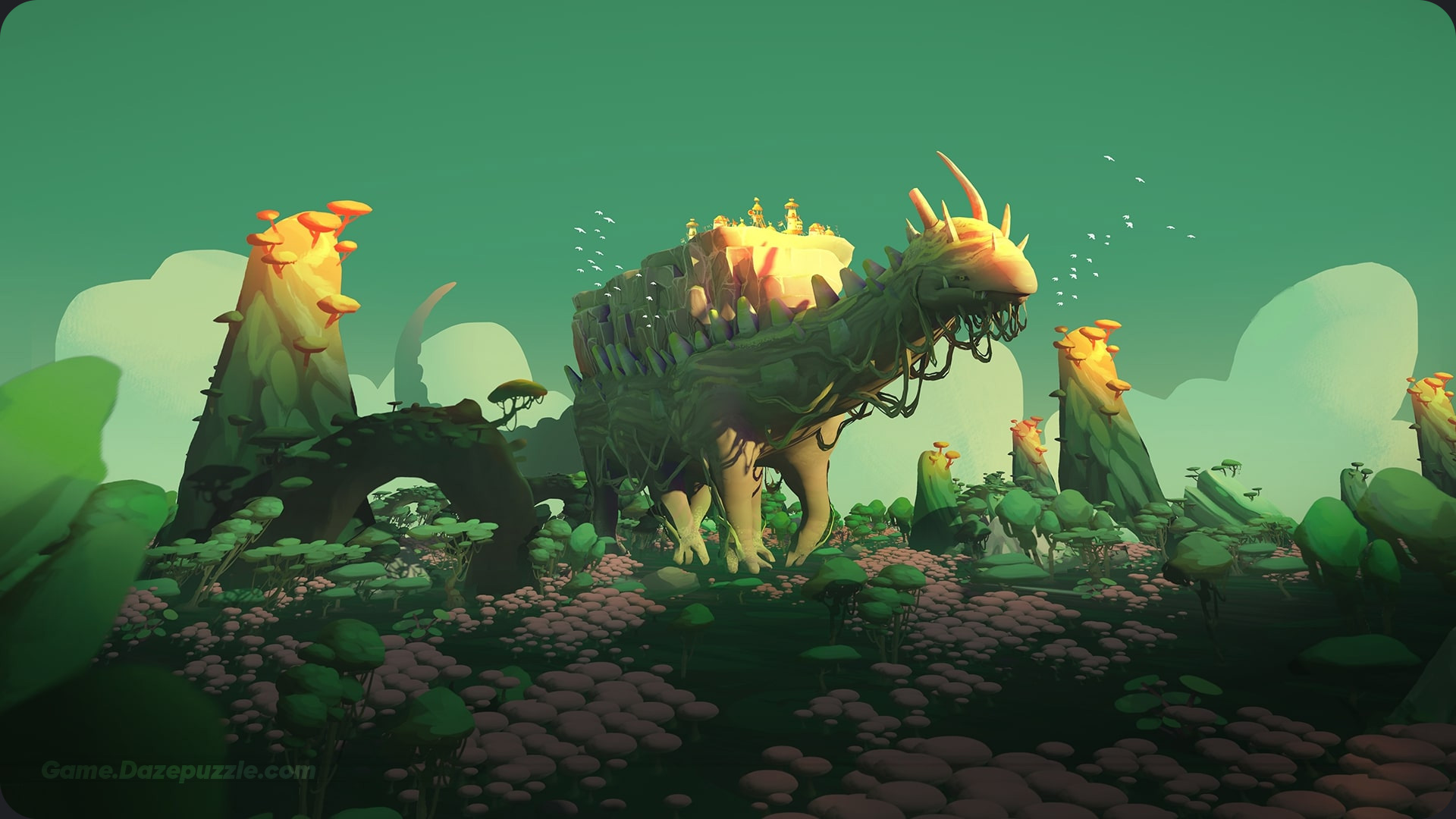
Neither path is inherently “wrong,” but you must commit. Trying to do a little of both will leave you with neither enough trust for control nor enough resources from exploitation.
Your Small Community: Managing Villagers and Happiness
Your villagers are the hands that build and maintain your settlement. Their happiness is measured by a single, crucial stat: Productivity. Higher productivity means your villagers move faster and complete tasks more efficiently. Low productivity grinds your village to a halt and makes it harder to attract new nomads.
The Pillars of Productivity
Villager happiness, and therefore productivity, rests on four key pillars:
- Housing: As your population grows, so do their housing demands. They start in Tents, then want Huts, and eventually demand Cottages. Failing to upgrade their housing in a timely manner will tank their productivity.
- Food Variety: Your people get tired of eating the same thing every day. Providing them with at least two different types of food (like berries and beets) gives a significant productivity bonus.
- Food Quality: Processed food is better than raw food. Cooked meals from a Kitchen or bread from a Bakery are essential for keeping happiness high as your population grows.
- Health: Hungry or poisoned villagers have abysmal productivity. Keeping them fed and healthy is a basic requirement for an efficient village.
The Nomad’s Dilemma: To Grow or Not to Grow?
Your population only grows when you find and invite nomads from locations on the world map. While more workers are essential for growth, accepting nomads is a strategic risk. Every new villager is another mouth to feed and another person to house, putting immediate strain on your resources.
Accepting too many nomads before your food and housing infrastructure is ready can trigger a “death spiral” of starvation, unhappiness, and eventual collapse. Be selective. Before inviting a group of nomads, check your food surplus, water storage, and available housing. Sometimes, the wisest decision is to turn them away to maintain stability, rather than risk your entire village for a few extra hands.
The Architecture of Survival: Smart Building and Layout
The challenge of building on Onbu’s back isn’t just what you build, but where you build it. Limited space and the time it takes for villagers to walk between buildings are major constraints. The key to an efficient village is to think in terms of Production Hubs.
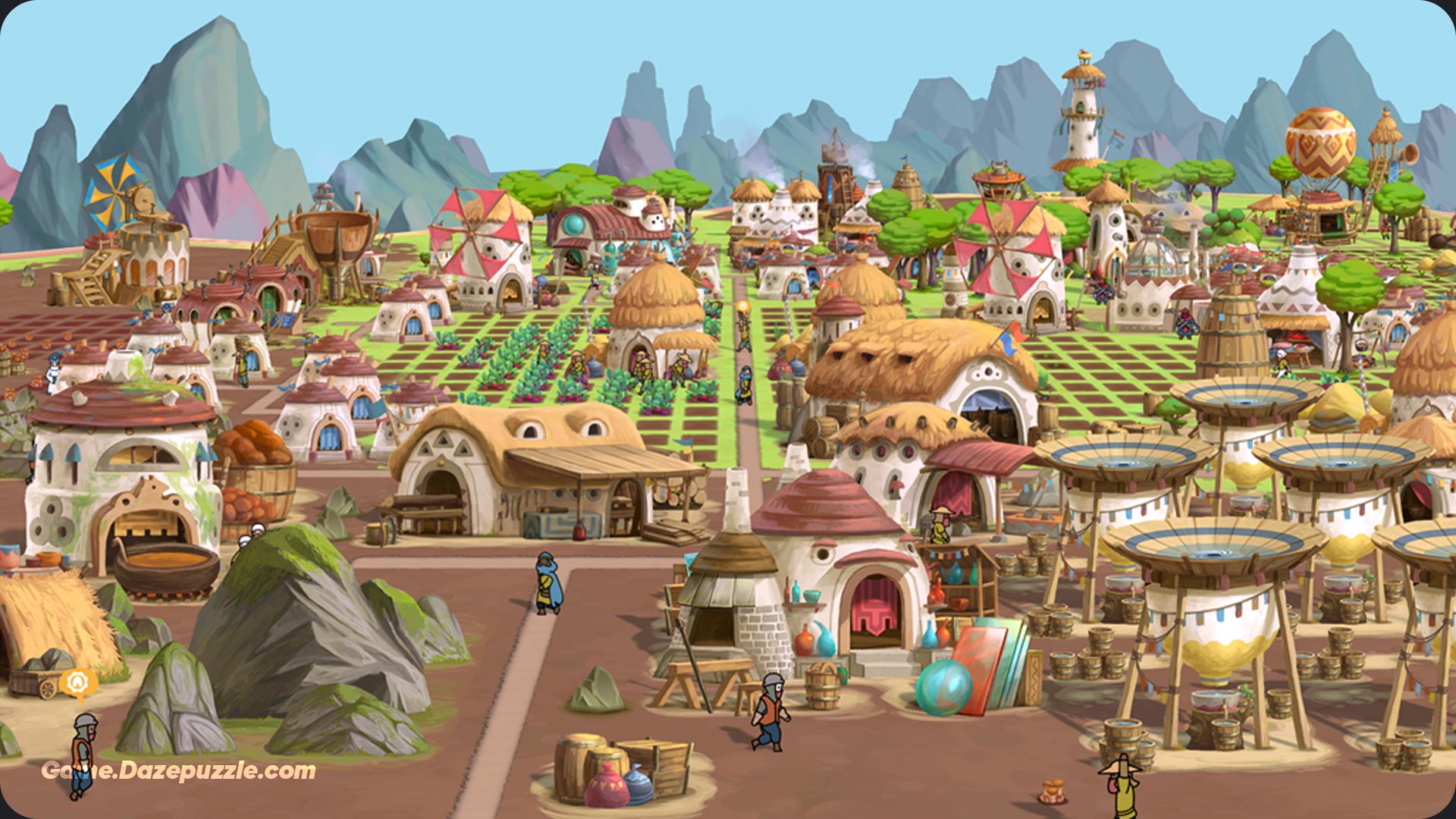
Group related buildings together to minimize travel time for your workers. For example, build your Air Wells and Water Tanks right next to your farms and Herbalists. Place your Kitchens and Pantries close to your food production. Put your Compost Heaps next to your Dung Collectors. This simple logic dramatically cuts down on wasted time, freeing up your villagers to be more productive.
Use the less valuable dirt patches and the edges of the village for residential districts. Villagers don’t need to physically visit their homes to get the housing bonus, so you can tuck them away to save the precious fertile grass plots for farms and central locations for important production buildings. Finally, connect your hubs with dirt or, even better, stone roads. Roads significantly increase villager movement speed and are one of the best investments you can make.
The Lifeblood of Your Village: Mastering Resource Management
Understanding the flow of resources is key to long term survival. Beyond the basics of wood and stone, there are a few key resources you need to master.
Water is Life: Surviving the Desert
Water is essential for your farms and for producing medicine. Your primary source is Air Wells, but their efficiency depends entirely on the biome’s humidity. They work great in jungles but are less effective in mountains and produce zero water in the desert. This makes Water Tanks absolutely essential. Your strategy should be to build numerous wells and tanks to collect and store massive amounts of water while in humid biomes, creating a stockpile to survive the inevitable journey through a dry one.
Dirty Gold: The Power of Onbu’s Dung
Onbu’s dung is not waste; it is a critical resource. Build Dung Collectors at the rear of Onbu to gather it. This dung is then taken to a Compost Heap, where it can be converted into two vital products: Biogas, a clean fuel source for your Decontaminators that doesn’t harm Onbu’s trust, and Compost, a fertilizer that boosts the efficiency of your farms.
Scavenging: The Engine of Your Progress
This cannot be overstated: scavenging is the most important activity in the game. Your technological progress is entirely dependent on Knowledge points, which can only be obtained from scavenging Shrines found on the world map. Furthermore, critical late game resources like iron and sand are also found exclusively through scavenging.
This creates a direct dependency: to solve bigger problems, you need better tech. For better tech, you need Knowledge. For Knowledge, you must scavenge. Your ability to advance is directly tied to how efficiently you scavenge. This makes researching the Scavenger Hut and later the Scout Tower your highest priority after securing basic survival. Your scavenging strategy is your progress strategy. Always prioritize scavenging Shrines for Knowledge, then rare resource locations like Quarries, and then Settlements to find more villagers.
Journey into the Unknown: Biomes and the World Map
Constantly zoom out to view the world map. This allows you to see upcoming biomes, hazards like toxic forests or storms, and scavenging opportunities. Knowing what lies ahead allows you to plan proactively switching crop types, stockpiling water, or preparing medical supplies before you enter a dangerous area.
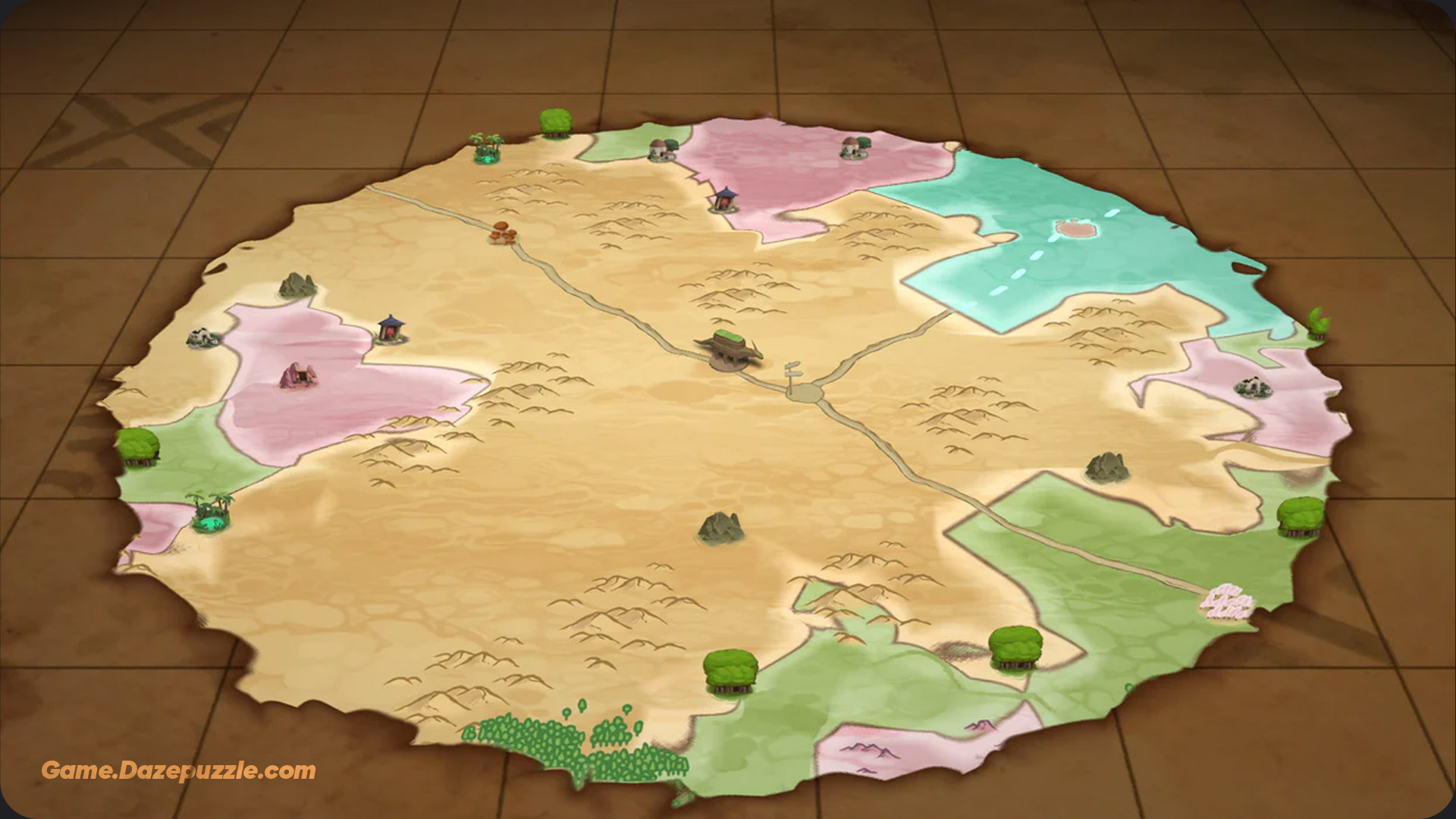
A Traveler’s Guide to the World’s Biomes
Each biome presents unique challenges and opportunities.
- Jungle: High humidity makes it great for water collection, and the temperature is good for most crops. However, it is extremely toxic, requiring a robust setup of doctors and decontaminators to survive.
- Mountain: Moderate toxicity and a good source of stone and iron. The cold temperatures limit your crop selection, primarily to beets and wheat.
- Desert: Very low toxicity, making it a safe place for Onbu to rest. It’s the only source of sand. The downside is zero humidity, which will drain your water reserves at an alarming rate. Crop selection is limited to heat resistant plants like corn and cactus.
Biome Comparison Chart
Use this table as a quick reference when you reach a fork in the road. It can help you make an informed strategic decision in seconds.
| Biome Name | Temperature | Humidity | Toxicity Level | Key Scavenge Points | Optimal Crops |
|---|---|---|---|---|---|
| Jungle | Normal | High | Very High | Forest, Settlement, Poison Forest | Tomato, Wheat, Herbs |
| Mountain | Cold/Icy | Low | Medium | Quarry, Mine, Settlement | Beets, Wheat |
| Desert | Hot/Scorching | Dry/None | Very Low | Sand Dune, Oasis, Quarry | Corn, Cactus, Tomato |
The Knowledge Tree: A Smart Research Guide
The tech tree is your path to a more advanced and resilient village. Since Knowledge is a bottleneck, you need to spend your points wisely.
The Optimal Research Path for Beginners
This research order is proven to set you up for success.
- Immediate Survival: Research the Kitchen (which is a prerequisite for the Scavenger Hut) and the Carpenter/Stonecutter to process raw wood and stone.
- Unlock Progress & Control: This is the most critical sequence in the game. Research the Scavenger Hut to start earning Knowledge, then immediately research the Hornblower to gain control over Onbu.
- Proactive Defense: Before you hit your first highly toxic biome, complete this chain: Dung Collector & Compost Heap (for Biogas fuel), then Herbalist & Village Doctor (to treat poison), and finally the Decontaminator (to clean toxic plants).
- Expand Your Horizons: Research the Scout Tower. This building is a game changer, dramatically increasing your scavenging vision range and making it far easier to find the all important Shrines.
Final Thoughts: Surviving the Long Haul
The Wandering Village is a marathon, not a sprint. Success depends on mastering a few core principles. Master the trust economy with Onbu and consciously choose your path. Prioritize scavenging above all else to fuel your progress. Think in efficient production hubs to save every precious second of your villagers’ time. And always, always keep an eye on the horizon to plan for what’s next.
You have the tools. You have the knowledge. Now lead your people, care for your giant host, and find a way to survive in this beautiful, but unforgiving, world. Good luck.
The Wandering Village Steam Page
Thanks for keeping up with Game.Dazepuzzle.com

